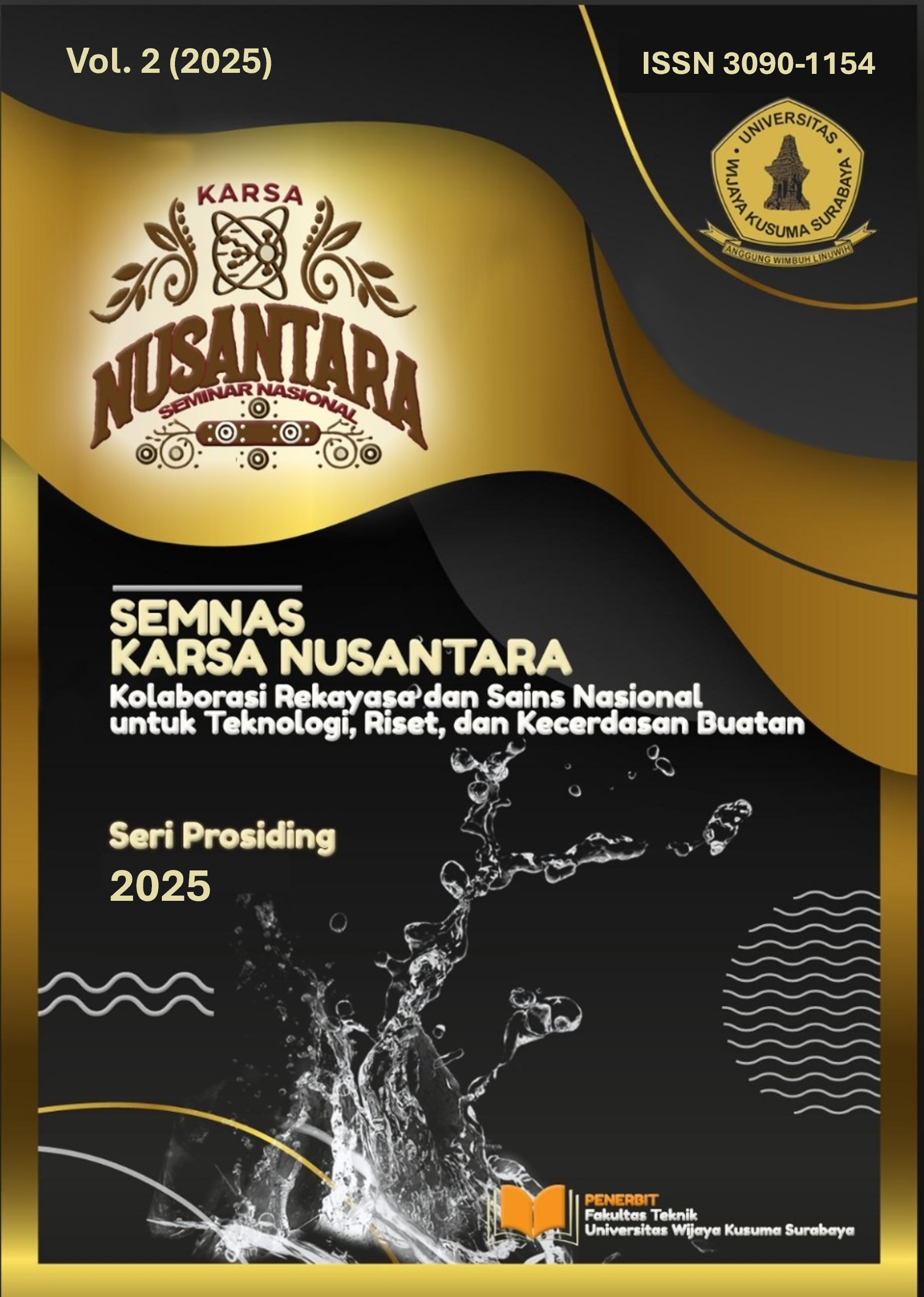Analisis error dimensi pada mesin 3D printing berbasis slurry
Keywords:
3DP, 3DPC, eror dimensi, fishbone diagramAbstract
3D printing is one of the technologies in the field of additive manufacturing, some fields that apply 3D printing are in the healthcare, the challenges in the health sector are demand that patient’s need, such as bone damage, of course bone damage between one patient and another will be different, both in terms of severity or damage and also the location of bone damage, in addition to the challenges is the estimation of the time needed in handling patients, this is a challenge in the health sector to request order what patient’s need or we can say it make to order according to the needs of each patient. Slurry-based 3D printing using biomaterials is one of the technologies that can be utilized and developed in this case, but in this development of course also experiences challenges and problems, in this case the problem must be analyzed one by one so as to find the cause and effect by using fish bone diagram analysis, making it easier to record the causes and effects faced, namely the problem of error in dimensions. The dimensional design made with the print results has different sizes, there are several possible causes of dimensional errors, namely people, machines, materials, CAD, and also part build orientation. Problems caused by people can be solved by training the people involved, while for machines, solutions can be provided by replacing some parts of the machine, for materials, solutions can be provided by optimizing the material before use, while for part build orientation, solutions can be provided by adjusting the size of the difference between the design and the print results.
References
K. R. Ryan, M. P. Down, N. J. Hurst, E. M. Keefe, and C. E. Banks, “Additive manufacturing (3D printing) of electrically conductive polymers and polymer nanocomposites and their applications,” Jul. 01, 2022, Elsevier B.V. doi: 10.1016/j.esci.2022.07.003.
A. Dedeloudi, L. Martinez-Marcos, T. Quinten, S. K. Andersen, and D. A. Lamprou, “3D-printed biomaterial-based scaffolds loaded with zoledronic acid functionalised ceramic microparticles for sustained release,” Int J Pharm, vol. 683, Oct. 2025, doi: 10.1016/j.ijpharm.2025.126101.
Z. Chen et al., “3D printing of ceramics: A review,” Apr. 01, 2019, Elsevier Ltd. doi: 10.1016/j.jeurceramsoc.2018.11.013.
G. A. Brady and J. W. Halloran, “Stereolithography of ceramic suspensions,” Rapid Prototyp J, vol. 3, no. 2, pp. 61–65, 1997, doi: 10.1108/13552549710176680.
A. Sobczak-Kupiec, K. Pluta, A. Drabczyk, M. Włoś, and B. Tyliszczak, “Synthesis and characterization of ceramic - polymer composites containing bioactive synthetic hydroxyapatite for biomedical applications,” Ceram Int, vol. 44, no. 12, pp. 13630–13638, Aug. 2018, doi: 10.1016/j.ceramint.2018.04.199.
K. Zhang et al., “Potential application of an injectable hydrogel scaffold loaded with mesenchymal stem cells for treating traumatic brain injury,” J Mater Chem B, vol. 6, no. 19, pp. 2982–2992, 2018, doi: 10.1039/c7tb03213g.
V. F. M. Segers and R. T. Lee, “Biomaterials to enhance stem cell function in the heart,” Sep. 30, 2011. doi: 10.1161/CIRCRESAHA.111.249052.
K. Mukund and S. Subramaniam, “Skeletal muscle: A review of molecular structure and function, in health and disease,” Jan. 01, 2020, Wiley-Blackwell. doi: 10.1002/wsbm.1462.
J. R. Sanes, “The basement membrane/basal lamina of skeletal muscle,” Apr. 11, 2003. doi: 10.1074/jbc.R200027200.
A. Kumah et al., “Cause-and-Effect (Fishbone) Diagram: A Tool for Generating and Organizing Quality Improvement Ideas,” Global Journal on Quality and Safety in Healthcare, vol. 7, no. 2, pp. 85–87, May 2024, doi: 10.36401/JQSH-23-42.
R. Carvalho et al., “Analysis of root causes of problems affecting the quality of hospital administrative data: A systematic review and Ishikawa diagram,” Dec. 01, 2021, Elsevier Ireland Ltd. doi: 10.1016/j.ijmedinf.2021.104584.
K. C. Wong, “Using an Ishikawa diagram as a tool to assist memory and retrieval of relevant medical cases from the medical literature,” 2011. doi: 10.1186/1752-1947-5-120.























